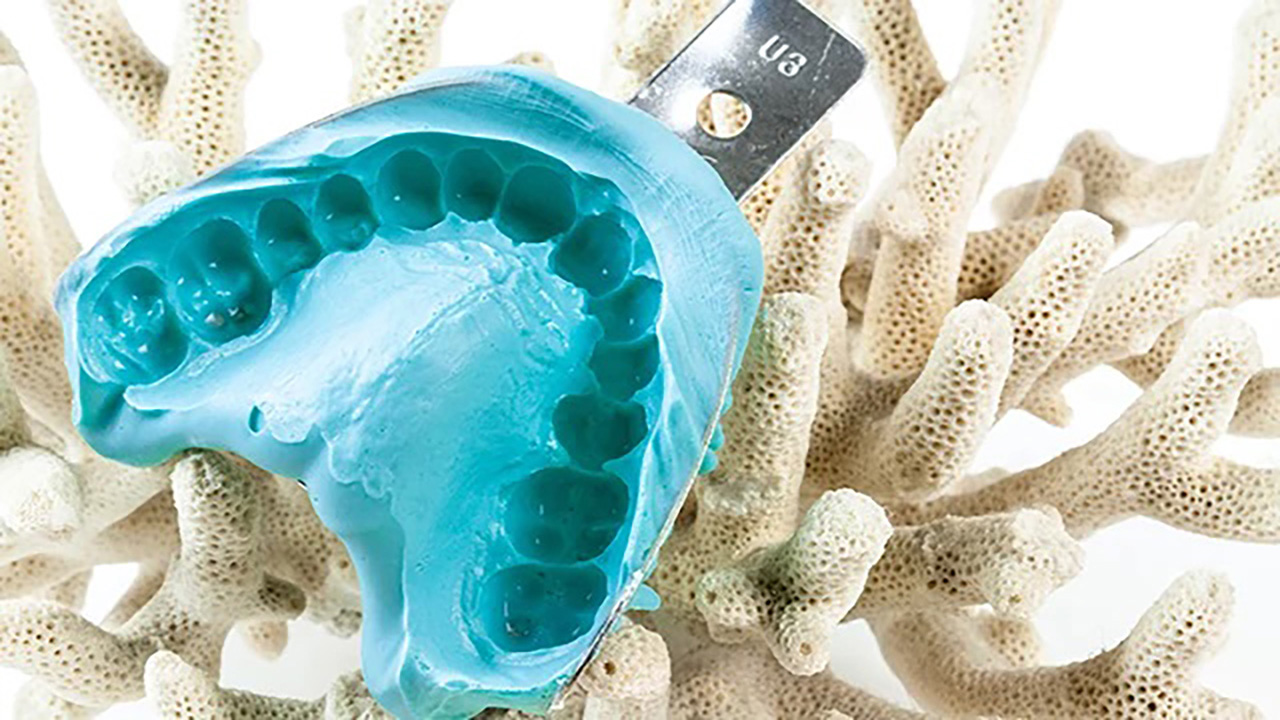Impression material is defined as any substance or combination of substance used / for making and impression / negative reproduction. Impression is defined as a negative likeness or copy in reverse of the surface of an object, an imprint of the teeth and adjacent structures for use in dentistry. Master impression is defined as a negative likeness made for the purpose of fabricating prosthesis. Impression technique s a method / manner used in making a negative likeness.
Desirable properties of an impression material are
- A pleasant odour, taste and acceptable colour
- Absence of toxic or irritant constituents
- Adequate shelf life for requirements of storage and distribution
- Economically commensurate with the results obtained
- Easy to use with the minimum equipment available
- Setting characteristics that meet clinical requirements
- Satisfactory consistency and texture
- Readily wets oral tissues
- Elastic properties that allow easy removal of the set material from the mouth and good elastic recovery
- Adequate strength to avoid breaking or tearing upon removal from the mouth
- Dimensional stability over temperature and humidity ranges normally found in clinical and laboratory procedures for a period long enough to permit the production of a cast or die
- Compatibility with cast and die materials
- Accuracy in clinical use
- Readily disinfected without loss of accuracy
- No release of gas or other by-products during the setting of the impression or cast and die materials
Classification of impression materials
Based on mode of setting and elasticity
Rigid
- Reversible / thermoplastic – Eg. Impression compound
- Irreversible / thermosetting – Eg. ZOE impression paste, Impression plaster
- Reversible - Eg. Agar
- Irreversible – Eg. Alginate
Elastic
- Hydrocolloid
- Elastomeric impression material – Eg. Polysulphides, Polyether, Addition silicones, Condensation silicones
Based in type of impression and area of use
Dentulous –
Primary – Eg. Alginate
Secondary – Eg.. Elastomers, Agar
Edentulous
Primary – Eg. Impression compound, Impression plaster, Alginate
Secondary – Eg. ZOE impression paste, Elastomers for CD
Based on their use in dentistry
Eg. Impression compound, ZOE impression paste, Alginate, Elastomers
Eg. Agar, Alginate, Elastomers
Based on the amount of pressure applied
- Mucocompressive - Eg. Impresion compound
- Mucostatic – Eg. Impression plaster
Based on manipulation
- Hand mixing – Kneading, Circular motion, Vigorous mixing
- Mechanical mixing
Based on the tray for impression
Article by Dr. Siri P. B.

 Dentist Channel Online
Dentist Channel Online

Hailey - 8 months ago